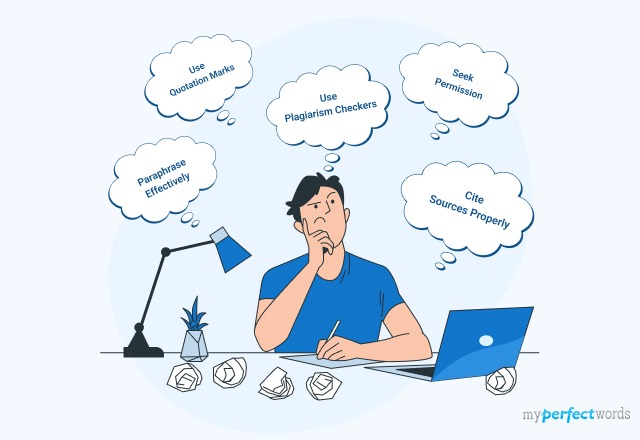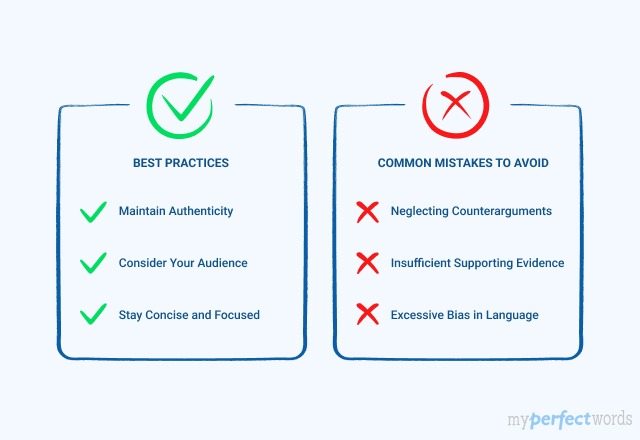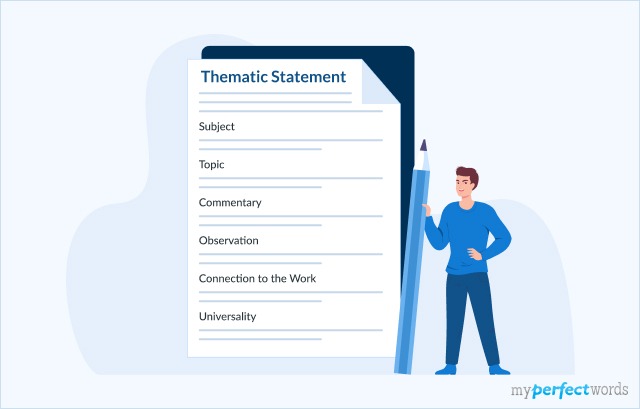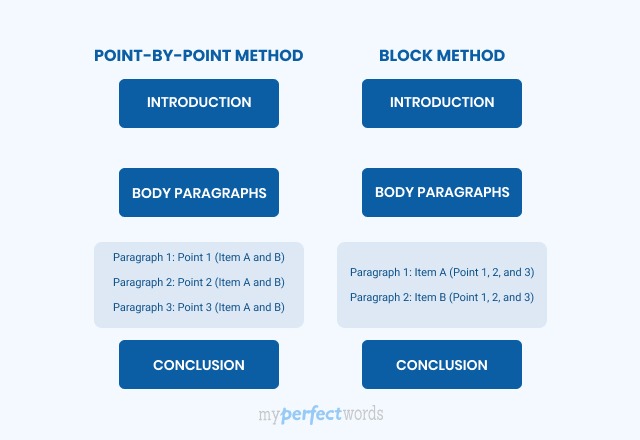What is a Summary
A summary is a condensed version of a larger piece of text, such as a book, article, speech, or any piece of information. It aims to present the main ideas, key points, and crucial details of that text.
Summaries aim to convey the main ideas concisely without losing the essence or important details. They provide a quick understanding of the original text without having to go through the entire material.
Key Elements of a Good Summary
- Conciseness: Clarity in brevity is key. A good summary is concise and to the point, avoiding unnecessary details.
- Accuracy: It must accurately represent the main ideas and arguments presented in the original material.
- Clarity: The summary should be clear and understandable to someone who hasn’t read the original content.
- Objective Tone: It presents information objectively without personal opinions or interpretations.
Need summary help? Our essay writing service delivers.
When to Write a Summary
You can write a summary for a variety of purposes. Here are some of the most common reasons for writing a summary.
- Academic assignments: Summary writing is a common assignment for students of all levels. Students are required to summarize the course material to demonstrate their understanding.
- Professional settings: Summaries are used in a variety of professional contexts. For instance, summarizing official discussions, legal proceedings, and news reports.
- Personal Notes: Making a summary is the best way to understand, remember, and retain the key points of a text you’ve read. Whether it’s a novel, a non-fiction book, a speech, or a movie, you can summarize it to test your comprehension.
4 Simple Steps for Writing a Summary
Now that we have a clear understanding of what a summary is, let's delve into the practical steps of crafting one. These general steps can be used for writing a summary of all kinds of source material.
Step 1- Read the Source Carefully
Begin by thoroughly reading the original text. Whether it's an article, a chapter, or a report, understanding the content is the first step to creating an effective summary. Plus, here are some things to do while reading:
- Note Key Points
Identify the important points, key arguments, and supporting details. Jot down notes or underline significant passages.
- Understand the Context
Grasp the context of the material. Consider the author's purpose, the target audience, and the central message. Understanding the context enhances your ability to distill the essence effectively.
- Ask Questions
Interact with the material by asking questions. What is the author trying to communicate? Why is this information important? Formulating questions helps clarify your understanding and guides the summarization process.
Step 2- List out the Main Points
Now that you’ve read the source material and made some notes, it’s time to revisit them. Think of this step as sculpting the raw material into a refined structure. Your list of main points serves as the framework for the summary.
Here’s what you need to do:
- Discern Main Points & Supporting Details
Discern the main ideas based on their significance to the overall message. Alongside main points, recognize supporting details that bolster the primary ideas. Focus on the most impactful supporting elements to ensure conciseness.
- Logically Organize the Points
Arrange the main points in a logical sequence. This structure will form the basis of your summary, ensuring that it flows coherently and mirrors the original content's organization.
Step 3- Write Your First Draft
Now that you’ve all the points to include in your summary, you are ready to start writing. Follow these tips for a neat first draft:
- Begin by Introducing the Source
The summary should start by mentioning the author, the name and type of text, and the main point. Here’s an example:
In the article "The Power of Mindful Leadership," Sarah Johnson, a seasoned expert in organizational psychology, presents an exploration of the transformative effects of mindfulness in leadership.
- Craft Clear and Concise Sentences
Translate each main point into a clear and concise sentence. Aim for simplicity without sacrificing accuracy. Your sentences should capture the essence of the original ideas.
- Maintain Logical Flow
Ensure a smooth transition between sentences and paragraphs. The logical order established in your list of main points should guide the flow of your draft, making it easy for readers to follow the narrative.
- Stay True to the Source
While crafting your draft, stay true to the intent of the original material. Avoid adding personal opinions or interpretations. Your goal is to faithfully represent the source in a condensed form.
Consider this draft as a canvas waiting for refinement. It doesn't have to be perfect on the first try. The goal is to get the main ideas down in a coherent manner.
Step 4- Edit and Revise
Ready to fine-tune your summary into a polished and impactful piece? Let's proceed to this next step involving revision and editing. Editing is where your summary transforms from good to great.
Here’s what you need to do:
- Prioritize Clarity
During the editing process, focus on clarity. Each sentence should be easily understandable.. Remove jargon or overly complex language.
- Check for Consistency
Review your summary for consistency in tone and style. A uniform voice throughout the summary creates a more professional and engaging reading experience.
- Trim Unnecessary Words
Challenge every word. If a word doesn't add significant value or if a sentence can convey the same idea with fewer words, make the necessary cuts. The goal is brevity without sacrificing meaning.
- Evaluate Sentence Structure
Vary your sentence structure to maintain reader interest. Mix short and long sentences to create a rhythm, but always prioritize clarity over complexity.
- Maintain Objectivity
Review your summary to ensure objectivity. Avoid injecting personal opinions or biases. Your role is to present the information neutrally, allowing readers to form their own interpretations.
- Read Aloud
Reading your summary aloud can help you identify awkward phrasing or areas where the flow could be improved. It's a simple yet effective way to catch errors and enhance readability.
Tips for Writing Different Types of Summaries
The above 4 steps are generic. They apply to all kinds of summaries regardless of the type of source material. However, different kinds of texts may require a few unique considerations while summarizing.
Let’s discuss some useful tips for summarizing specific kinds of sources.
How to Write a Summary of an Article
Along with the four main steps discussed above, you should follow these tips when summarizing an academic article.
- Identify the Thesis Statement
Most probably, you can find an article's main argument in its thesis statement. This is the central point the author is trying to convey. Your summary should prominently feature this key element.
- Condense Each Section
Divide the article into sections (introduction, body, conclusion) and summarize each separately. This ensures you cover the entire article systematically.
- Pay Attention to the Conclusion
The article's conclusion often restates all the main points. Summarize this section carefully as it provides a concise recap of the author's key arguments.
- Be Mindful of the Tone
Reflect the tone of the article in your summary. Whether it's persuasive, informative, or analytical, mirroring the tone helps maintain the author's intended impact.
How to Write a Summary of a Story
Summarizing a story involves distilling the narrative elements into a brief but comprehensive overview. Here are specific tips to craft an engaging summary of a story.
- Identify the Central Plot
Pinpoint the main plotline of the story. Focus on the central conflict, characters, and their interactions. This forms the core of your summary.
- Highlight Key Characters
Introduce the main characters and their roles in the story. Emphasize their motivations and how they contribute to the narrative.
- Capture the Setting
Provide a brief description of the story's setting. Whether it's a vividly depicted cityscape or a quaint countryside, the setting contributes to the overall atmosphere.
- Outline the Major Events
Summarize the key events in the story, emphasizing those that drive the plot forward. Include pivotal moments that shape the characters or lead to significant developments.
- Consider the Theme
Reflect on the overarching theme of the story. Whether it's love, resilience, or the triumph of good over evil, convey the thematic elements that give the story its depth and meaning.
- Avoid Spoilers
Be mindful of spoilers, especially if your summary is intended for readers who haven't experienced the story. Provide enough information to pique interest without giving away crucial surprises.
How to Write a Summary of a Book
Summarizing a book can be very helpful for understanding its contents. Here’s how to make a summary of a book:
- Grasp the Book's Genre and Purpose
Understand the genre and purpose of the book. Whether it's a novel, a self-help guide, or a historical account, recognizing the book's intent informs the tone and focus of your summary.
- Outline the Main Themes
Identify the primary themes or messages conveyed in the book. This overarching perspective helps set the tone for your summary and provides readers with a sense of the book's core ideas.
- Provide Context
Offer a brief context for the book. Consider the historical or cultural background if relevant. Understanding the context enhances the reader's appreciation for the material.
- Focus on the Author's Style
Consider the author's writing style. Whether it's lyrical and descriptive or straightforward and factual, mirroring the author's style in your summary helps convey the book's atmosphere.
How to Write Summary of a Paragraph
Paragraphs are chunks of text that focus on a single idea within a larger text, such as an essay or article. Here’s what you need to do for crafting an effective paragraph summary:
- Identify the Topic Sentence
Pinpoint the topic sentence, which often introduces the main idea of the paragraph. This sentence encapsulates the central theme and sets the stage for your summary.
- Focus on the Purpose
Consider the purpose of the paragraph. Is it informative, persuasive, or explanatory? Tailor your summary to convey the paragraph's purpose effectively.
- Use Your Own Words
Express the main idea and supporting details using your own words. This ensures that your summary is an interpretation rather than a verbatim repetition of the paragraph.
Summary Writing Examples
Now that you know the basic steps and tips for writing a summary, let's explore some examples to see these tips applied in practice.
Key Points to Remember About Writing a Summary
With the steps, tips, and examples provided above, you have all the resources you need to get started.
However, before you begin, here are some of the important things to remember. These points below answer some of the most common queries about summary writing.
- The length of your summary depends on the length of the source material. For instance, summarizing a book will take more words than summarizing an essay.
- A summary conveys the ideas presented in the original text. So you should not include your own analysis or opinions in the summary. Stay objective throughout the summary-writing process.
- Use language and terminology that aligns with the expectations of your target audience while staying true to the source. This ensures your summary is accessible and engaging.
- Paraphrase the original text in your own words and provide accurate citation of the source to avoid plagiarism in your summary.
To conclude,
We've navigated through essential steps, insightful tips, and practical examples to equip you with summarizing skills. Whether summarizing articles, books, or chapters, the steps provided above will help you ensure clarity and coherence in your summaries.
So go ahead, utilize this knowledge and write a good summary for any text you want!
Are you plagued with the question: 'can someone do my essay' for me?
MyPerfectWords.com is a professional online platform for writing help. Our experienced and qualified writers are well-versed in writing all kinds of summaries. They will craft an original summary for you, according to your requirements and needs. So, get writing assistance from our experts and leave your essay worries to us!











-10652.jpg)





